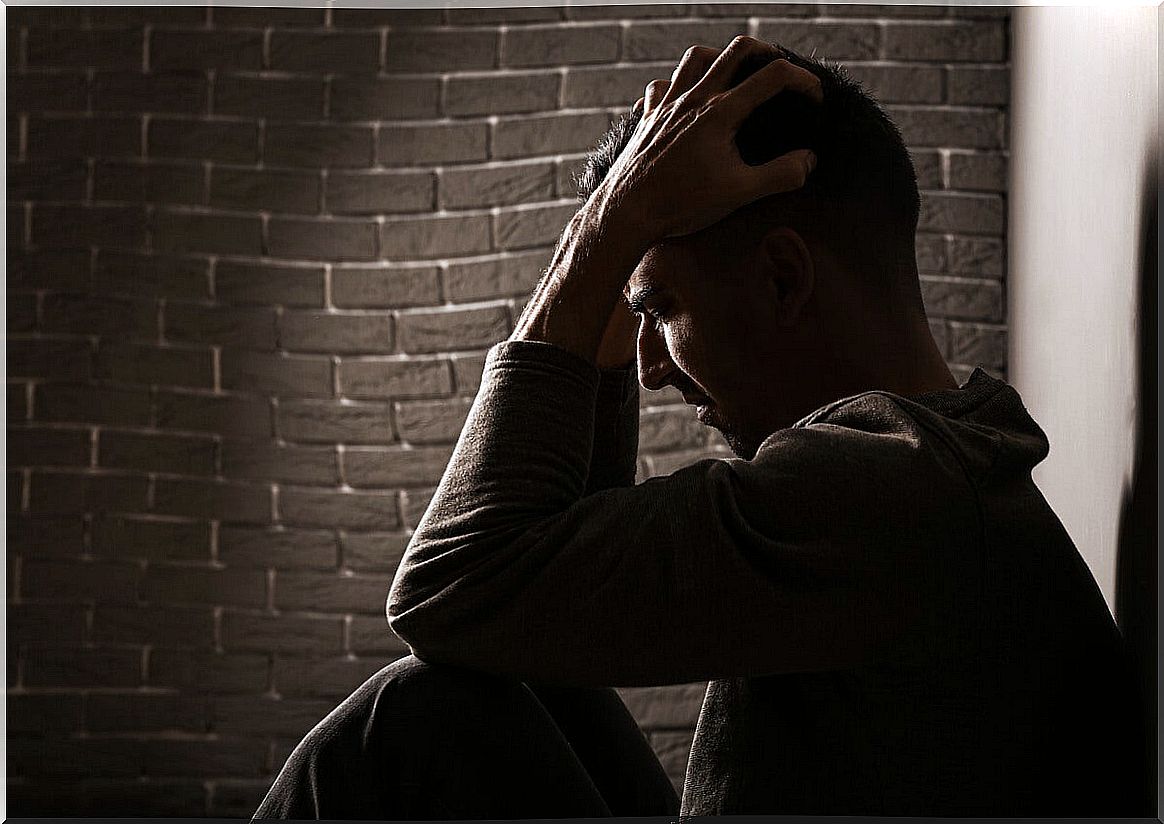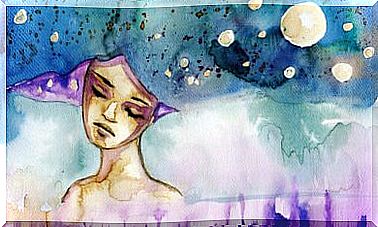What Is Life Anguish And How To Deal With It?

Anguish is a type of affective state associated with disturbing or suffering sensations. It can also produce a feeling of suffocation, deep sadness or a feeling of extreme vulnerability. When we speak of vital anguish, we refer to a type of anguish very focused on the fear of suffering harm or being attacked.
This type of anguish is very generalized; In other words, it is a feeling of discomfort that appears in all areas of our life, and although it is usually related to the fear of suffering some damage, it also involves fear of life in general. It is a permanent state of emotional disturbance that undermines life force and quality of life.
What is vital anguish?
Life anguish involves a constant fear of being attacked and also carries physical symptoms such as headache, breathing difficulties, excessive sweating or nausea. In the past, life anguish was considered an essential fear for survival. However, at present this phenomenon cannot be considered adaptive, because it generates discomfort and unnecessary suffering in the person who suffers it.
This type of anguish is a very generalized type of anxiety, which is associated with negative emotions. The person may feel very limited in their day to day when suffering from these types of symptoms. In addition, together with the vital anguish, depressive symptoms can also appear, as well as unpleasant sensations for the person. Its effects on the physical and psychological health of the person are evident.

How to deal with life anguish?
To deal with this type of feeling, the first thing we will recommend is asking for psychological help. Therapy is a good tool when we feel overwhelmed, or when we feel that we do not have the necessary strategies or resources to deal with a certain situation or feeling.
Beyond asking for help, we can also begin to apply changes in our life and in our way of thinking to begin to combat this distressing feeling. Some guidelines that can help us are:
Assume that it is
The first step in dealing with this vital anguish is to recognize it, to name it. We cannot face a problem or a symptom if we do not take real awareness that it exists and, above all, that it is interfering in our life and in our discomfort. That is why if you suffer from this type of anguish, we encourage you to stop and admit that there is something that causes you intense discomfort.
Suppressing emotions or sensations usually has negative effects in the short and long term, and also does not allow us to work on the problem (because we deny it). So allow yourself to feel, accept that something is wrong, and start working on it. And above all, do not feel guilty about it, or demand to “be okay.” From this point on, we can start working on the second point.
Introspect
Through introspection, we can come to understand (in part) what is causing this discomfort. Thus, we must review our life and our emotions and listen to ourselves to begin to glimpse what is really happening to us.
On the other hand, it will also be important to identify what causes us fear or anguish. In this sense, a good idea will be to write down the exact situations that we fear, along with the thoughts and emotions associated with these types of situations.
Expose yourself to what you fear
From psychotherapy, exposure therapy is the most effective to work phobias. In this case, vital anguish makes us fear something, especially situations that lead us to think that we will be attacked or harmed.
Thus, exposing ourselves to these situations and to these fears can be another small step to face this anguish. Sometimes it works to do it gradually. Of course, always with professional help if we need it.
Practice relaxation
The practice of relaxation is very beneficial to address anxiety symptoms, which can also have benefits in the case of anxiety. When a person is in distress, his thoughts may rush to his head, and his mind may be constantly on the alert, waiting to respond to some imminent danger.
At a physiological level, the person can also be especially activated (as with anxiety). That is why reducing these levels of activation, both physical and mental, through relaxation exercises, can help the person to reduce this vital anguish.

I suffer from vital anguish: how do I begin to move forward?
Vital anguish is a generalized feeling of discomfort, constant worry and emotional suffering, which can derive from multiple situations. However, it usually refers to an anguish due to fear of receiving harm or fear of being attacked. It can also refer to an anguish about life itself, which is not enjoyed and is experienced with intense discomfort.
As we can see, it is a complex concept that should be discussed individually. Multiple causes can hide behind this symptom, and in each person it can vary enormously in terms of physical and psychological effects.
Although we can begin to put into practice some habits that help us identify its causes and the effect it has on our lives, such as those mentioned, the best way to approach a stage of vital anguish is by requesting professional help. A good psychologist can assess our case in question, as well as offer us the guidelines we need to start feeling better.









